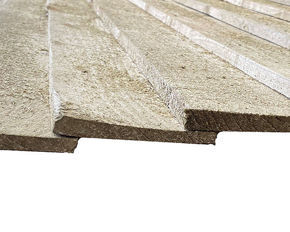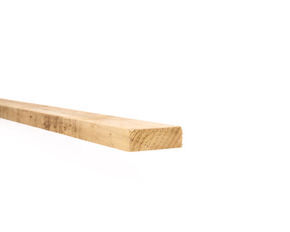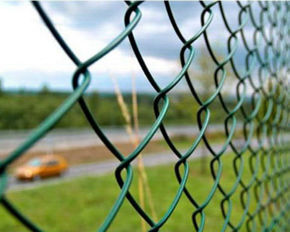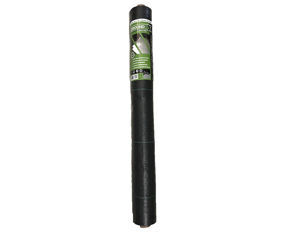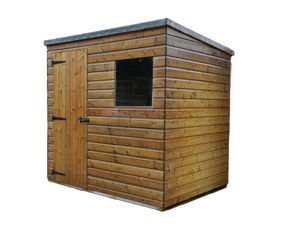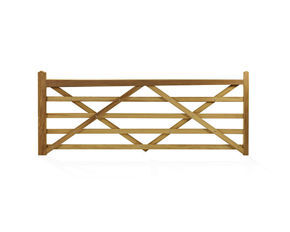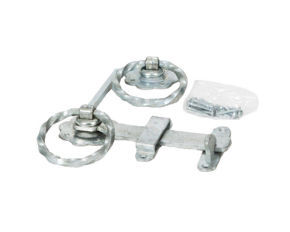Maintaining Slip-Resistant Decking: Dos and Don'ts
Your garden decking is exposed to many different types of weather conditions, from heavy downpours to hot summer days. This means that decking can get discoloured, warped, slippery and weaken over time.
This is why speciality decking has been created, such as our slip-resistant decking. Maintaining anti-slip decking is crucial to prevent and ensure your deck remains a safe and inviting space.
In this blog, we'll explore the dos and don'ts of maintaining slip-resistant decking.
The Dos of Maintaining Slip-resistant Decking
Regular Cleaning:
- Sweep and Clear Debris: Start by sweeping your deck with a broom regularly to remove leaves, dirt, and other debris that can make your deck surface slippery. These particles can accumulate moisture and create a hazardous environment.
- Use a Mild Detergent: When cleaning your deck, opt for a mild detergent mixed with warm water. This gentle solution can effectively remove the buildup of dirt and grime without damaging the slip-resistant surface. Avoid harsh chemicals, which can degrade the slip-resistant coating over time.
Pressure Washing:
- Use Low Pressure: Pressure washing is an excellent way to deep-clean your deck occasionally. However, use a low-pressure setting and maintain a safe distance to prevent damage to the slip-resistant coating.
- Maintain a Consistent Motion: When pressure washing, move the wand in a consistent motion along the wood grain to avoid streaking or damaging the surface.
Routine Inspections:
- Check for Damaged Areas: Regularly inspect your deck for any signs of wear and tear, such as peeling or chipped slip-resistant coatings, loose boards, or nails. Address these issues promptly to maintain the deck's safety and longevity.
- Assess Drainage: Ensure that your deck's drainage system is functioning correctly. Proper drainage helps prevent the accumulation of water, reducing the risk of slip-related accidents.
Sealing and Re-coating:
- Recoat Periodically: Depending on the type of slip-resistant coating you have, you may need to reapply it periodically. Follow the manufacturer's guidelines for the recommended maintenance schedule. Typically, you'll need to recoat every few years to ensure optimal slip resistance.
- Seal the Wood: If your slip-resistant decking is made of wood, consider sealing it with a quality wood sealer. Sealing prevents moisture penetration and helps maintain the wood's integrity.
Use Proper Cleaning Tools:
- Soft Bristle Brushes: When scrubbing your deck, use soft bristle brushes or brooms. Avoid abrasive materials that can damage the slip-resistant surface.
- Non-metallic Shovels: In snowy climates, use non-metallic shovels for snow removal to prevent scratching or gouging the deck surface.
_1000.jpeg)
The Don'ts of Slippery Decking
Avoid Harsh Chemicals:
- Say No to Bleach: While bleach may seem like a powerful cleaner, it can damage the slip-resistant surface and discolour your deck. Stick to mild detergents instead.
- Steer Clear of Solvents: Solvent-based cleaners can strip away the protective coating, leaving your decking board more susceptible to slipping.
Don't Neglect Regular Maintenance:
- Ignoring Repairs: Ignoring damaged areas or loose boards can lead to further deterioration and increased safety hazards.
- Skipping Re-coating: Neglecting to reapply slip-resistant coatings as recommended by the manufacturer can result in decreased slip resistance over time.
Don't Overlook Snow and Ice Removal:
- Don't Use Rock Salt: Rock salt can corrode your deck's metal fasteners and damage the wood. Instead, use ice melt products specifically designed for decks.
- Avoid Metal Shovels: Metal shovels can scratch and gouge your deck's surface, compromising its slip resistance. Opt for plastic or rubber shovels instead.
Don't Neglect Proper Drainage:
- Allowing Puddles: Standing water can be a slip hazard. Ensure that your deck's drainage system is in good working condition to prevent puddles from forming.
Don't Rush Pressure Washing:
- High Pressure: Using high-pressure settings or holding the pressure washer nozzle too close to the deck can cause damage to the slip-resistant coating. Take your time and use low pressure.
In conclusion, maintaining a slip-resistant deck is essential for safety and enjoyment. Regular cleaning, routine inspections, and proper recoating are key to preserving your deck's slip resistance.
Avoid harsh chemicals, prioritise snow and ice removal, and always address damage promptly. By following these dos and don'ts, you can ensure that your outdoor space remains safe for years.
Contact Bendrey Brothers, If you're thinking, or looking to purchase timber decking for your garden, feel free to contact us, you’ll find us within convenient access from Bristol and Bath.










